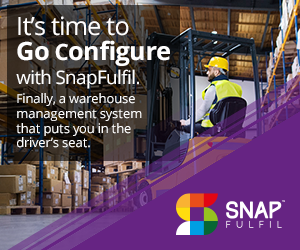Three most important steps of a WMS change management plan
A change would do you good. Well, at least if your team sticks with the change.
When warehouses want to make significant changes today, they’re typically implementing or adopting a new WMS designed to address common concerns around productivity, accuracy, and inventory. Achieving gains in those areas takes careful planning, especially in terms of change management.

While there are many different models of specific change management plans, there are common threads that run through each. Let’s look at three of those significant steps and threads that you’ll need to have a change management plan that works — meaning people actually stick to the change!
Create a list of actions that must happen
For change management plans to work, whether they’re a WMS or ERP or any other systematic shift, you and your people need a clear understanding of what changes must occur. Start by developing a list of actions you have to take before you implement the WMS, including all the tech, dashboards, and other things you’ll need to learn.
After you’ve got a list of what will be required to implement the change, start defining the change itself for your staff. What do managers need to know? Pickers? Packers? Teams who specialize in unloading or cross-docking?
Build a clear picture of all the actions needed to implement your change, including the training and pre-emptive support required to get everyone on the same page.
Define what to measure and how it impacts your operations
You’re adopting a new WMS or a shift to how you use your current WMS to meet specific goals. You want to see big-picture impacts like fewer returns or greater efficiency — the top reason companies implement a WMS according to recent research. Many new WMS projects want to achieve 95%+ accuracy on orders out the door.
State your goals as clearly as possible.
Now, break them down relative to change management. How quickly do you want teams to start using the new system? What measurements do you need after you implement a project? How can you tell if someone is using the platform correctly or if they’ve just figured out a way around the new WMS?
Narrowing each big goal into a small measurable piece for each position helps you ensure that you’ve thought about the WMS holistically and are ready for the changes it may produce. You might also realize that you can see related gains in other areas.
For example, your pickers might become more efficient, so your inventory and accuracy scores rise significantly higher. Once that change happens, your floating positions may spend less time fixing mis-picks. And eventually down the line, your managers and shift leaders could spend less time reviewing and addressing performance problems, and more time celebrating gains and looking for further cost-savings or efficiency improvements.
Build availability for help and support
The final, and perhaps most crucial step, we’ll discuss today is developing a feedback tool. This step often occurs after change implementation begins, but we think it’s essential to plan it well before you implement any part of a WMS project, even the training for a new system.
Your team will have concerns and questions along the way. They’ll need help or be unsure of process steps, or even have ideas on how to make further improvements. As a leader, you need to have a way to receive this feedback and communicate that to everyone involved.
It can be as simple as a suggestion box or asking for emails or adding a whiteboard to the warehouse floor where people can write their thoughts for each zone or section you run.
Make it simple for your team to ask for help, and you’ve got your best chance of getting out ahead of any implementation and adoption issues. And, that’s the heart of successful change management.



